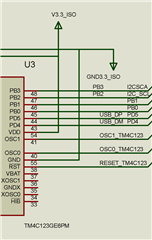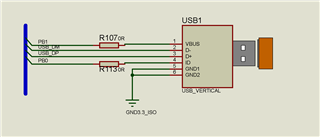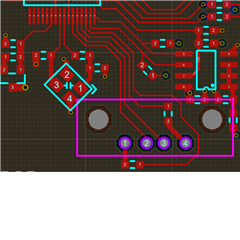Tool/software:
Hello,
I have designed a custom board using TM4C123AE6PM. I want to program TM4C over usb port. To do that i used the below circuit.. But when i connect the custom board to usb port of laptop pb1 port burned in a few seconds.I guess it is because 5Vdc on port1 of usb.
by the way at the beginning: the mcu was empty. not programmed.



Then i dropped the voltage to 3.3Vdc with a voltage divider I made from resistors(4K7 AND 10K). I also connected 1k resistors in series to the PB0 DM and DP ports (to limit the the current). PB1 did not burn, but laptop's USB port did not detect the TM4C custom card (I used a new custom board, not the damaged one).
Thanks in advance for your help.
Regards
Erdem

